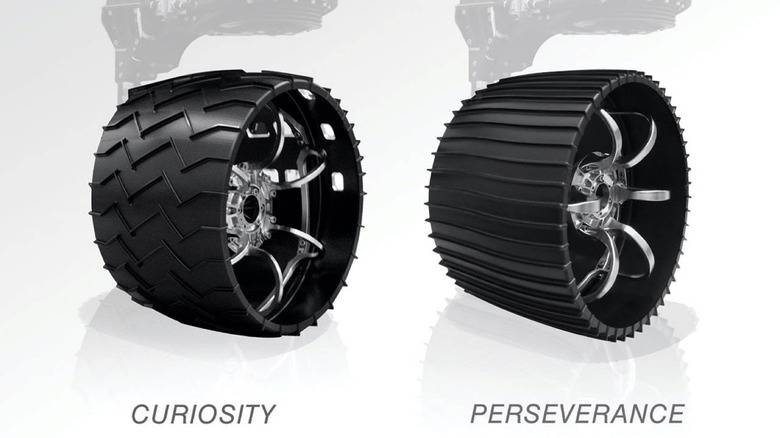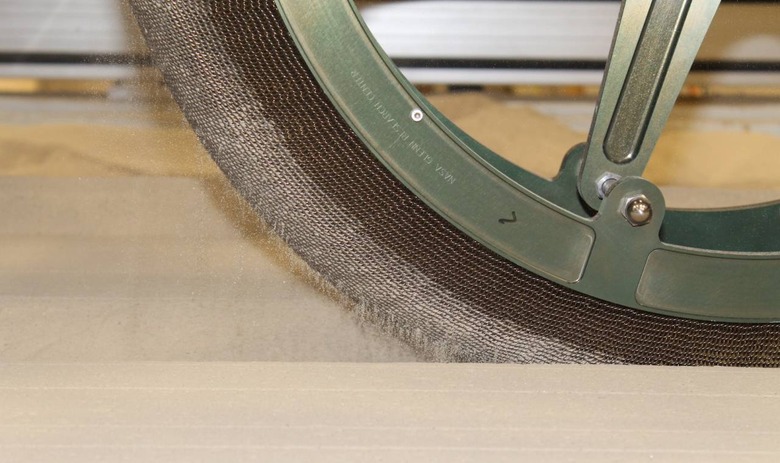NASA "Memory Metal" Tires Could Give Future Mars Rovers A Wheel Upgrade
NASA is working on shape memory alloy tires for future missions to Mars, figuring out ways to give rovers and more an airless, shapeshifting wheel. While NASA's Perseverance rover is headed off to Mars later this year with six aluminum wheels, in the future NASA vehicles – and vehicles a lot closer to home – could take advantage of memory metals.
Perseverance's wheels are huge, at 20.7-inches in diameter. They're made of aluminum, and fitted with special cleats for traction. Curved titanium spokes lend a degree of springiness, absorbing some of the bumps on the uneven Mars terrain. The rover is equipped with a separate drive motor for each of those six wheels, four of which can steer so that Perseverance can spin on the spot.

It's clever, but NASA is looking beyond that technology to something that taps innovative shape memory alloys (SMAs). These are alloys which can flex when pressure is applied, but will always return to their "remembered" shape.
A team at NASA's Glenn Research Center is using the metals to make new tires. These could contour to the terrain underneath, maximizing grip and even enveloping rocks and other small obstacles without suffering a puncture. They'd also allow for a smoother ride, since the deforming tire would act as a shock absorber.
The tires themselves look a little like "ghost" wheels: mesh-like bubbles attached to a wheel hub. While they may seem less sturdy than, say, Perseverance's current metal wheels, in reality they're more resilient.
Tests at the Simulated Lunar Operations Lab at Glenn – which has various replicas of Martian landscapes, and can be used to trial out new wheels and other technologies – have shown that the SMA tires actually have better grip and traction than the existing versions. "The more capable tires also allow for a rover design using four tires as opposed to the past six-tire configurations," NASA explains. "So, in the case of future human exploration or robotic missions, these tires can provide valuable flexibility in the vehicle and spacecraft design."
Cutting down on the number of wheels could help make a future rover – or a vehicle for crewed operation on the surface of Mars, even – more straightforward, and reduce the potential areas for failure. Perseverance has not only the six drive motors, for example, but each of the front and rear wheels also have individual steering motors. While that allows it to be nimble, it also represents more possible mechanical or electrical points of failure.

"We're developing a Mars-grade material that greatly improves SMA capability and makes reversible material deformations possible in the harsh Martian environment without sacrificing performance," Dr. Santo Padula, lead SMA materials and design engineer at Glenn, explains.
The technology could have benefits down here on Earth, too. Glenn has already shown off a prototype of wheels for regular vehicles which would use its SMA developments for a completely puncture-resistant alternative to traditional rubber tires.
